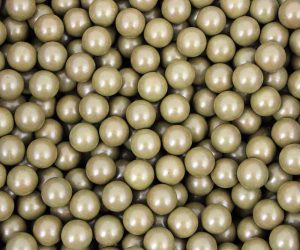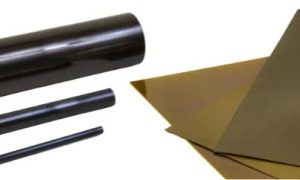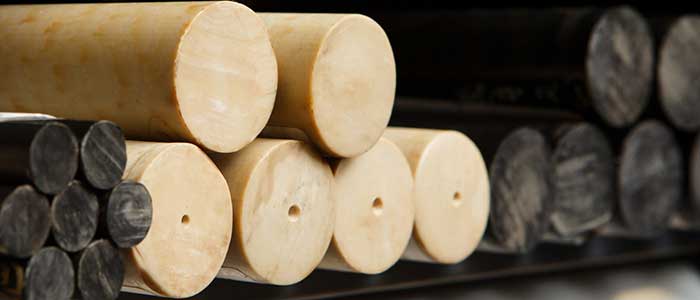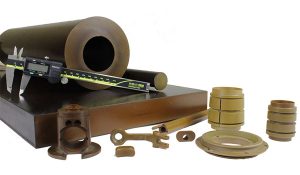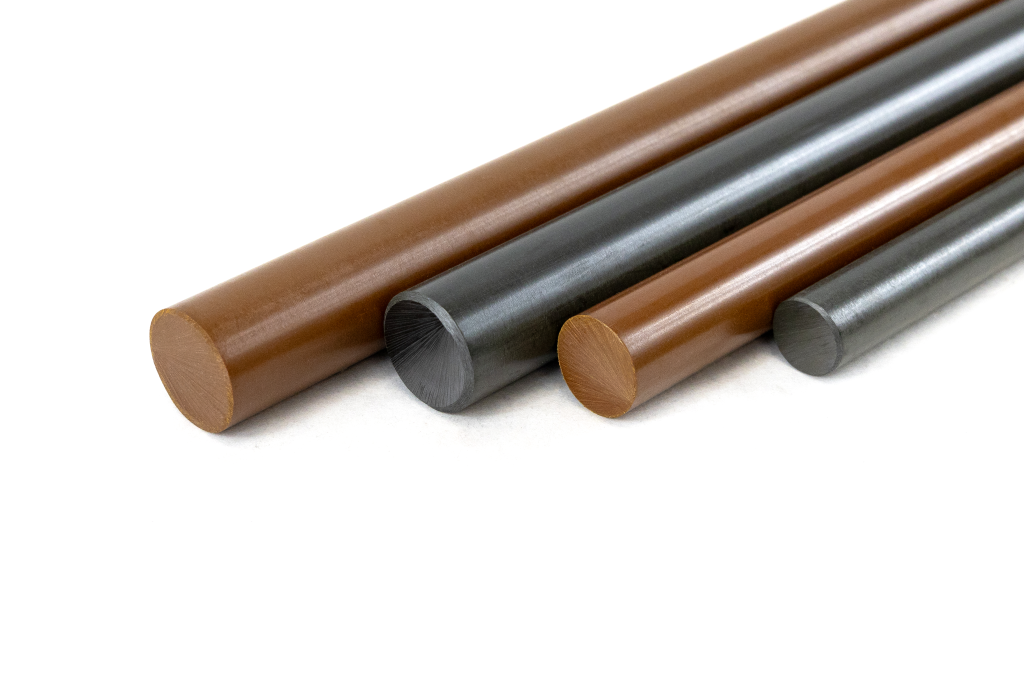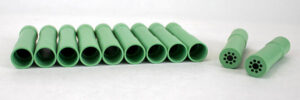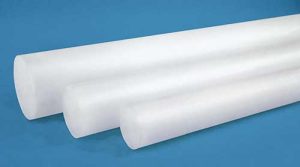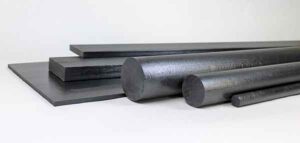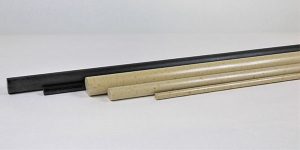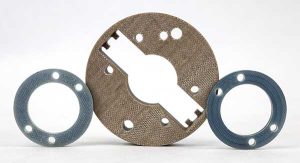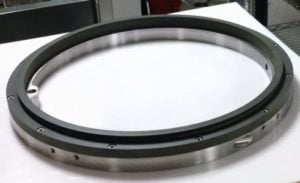What is Drake PCTFE?
Drake PCTFE is made from a fluoropolymer chemically designated as polychlorotrifluoroethylene. The combination of fluorine and chlorine in the material’s composition give it several performance advantages over other fluoropolymers. Drake offers its PCTFE as machinable shapes and precision machined parts.
Primarily recognized for its performance in cryogenic environments, Drake PCTFE offers dependable sealing performance in LOX, LH2, LN2 and LNG processing, transport and storage applications and spacecraft equipment. It features V-0 flammability with a high LOI, chemical and radiation resistance and low outgassing.
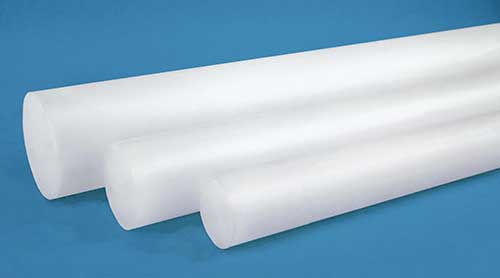
Is Drake PCTFE the Same as Kel-F PCTFE?
PCTFE was first manufactured by W.M. Kellogg Company in 1950 under the Kel-F brand. 3M later acquired the business, then exited in the 1990s but retained ownership of the Kel-F brand. As a registered brand name for PCTFE, however, Kel-F is no longer officially in use.
PCTFE resin is now supplied globally by several producers under different brands, and the various PCTFE resins all share similar properties and performance characteristics. Although the Kel-F registered brand no longer exists commercially, engineers still commonly refer to various PCTFE resins as Kel-F because of the more than four decades of specifications for the unique material under that trade name.
Today’s major suppliers’ brands of PCTFE resin are comparable to Kel-F PCTFE. They include Voltalef® PCTFE from Arkema, NeoflonTM PCTFE produced by Daikin, and Honeywell’s Aclon® PCTFE. Drake’s portfolio of machinable PCTFE shapes is produced from Arkema’s Voltalef® resin.
What are the Key Properties of Drake PCTFE?
Drake PCTFE shapes deliver the polymer’s unique combination of properties in precision machined applications that must function dependably under extreme conditions. The high performance fluoropolymer is noted for its chemical and radiation resistance, gas impermeability and low outgassing, low flammability, and property retention at temperatures from -255 °C (-427 oF) to +150°C (302 oF). It can also withstand short-term temperature excursions to 200 °C (392 oF). Most notably, PCTFE is well-recognized for its dependable sealing properties in cryogenic conditions associated with LOX, LH2, LN2 and LNG systems and equipment.
Reliability at Cryogenic and High Temperatures
The PCTFE polymer retains its mechanical and sealing properties at the cryogenic conditions required to regulate and seal liquid oxygen (LOX), liquid hydrogen (LH2), liquid nitrogen (LN2) and liquified natural gas (LNG). As a result, PCTFE has built an impressive record of reliable performance in valves and seals in equipment for processing, storage, transfer, transport and fueling systems of LOX, LH2 and LNG. It is also specified for aerospace industry applications exposed to liquid oxygen used as rocket fuel.
Drake PCTFE also performs well at the upper end of its operating temperature range where it resists creep and maintains its structural strength under physical loads. Additionally, PCTFE exhibits low outgassing, and its dimensional stability is a benefit for components that must hold precision tolerances through wide and sudden temperature changes.
Mechanical Strength
A significant difference compared to other fluoropolymers is PCTFE’s higher rigidity. Its flexural modulus measures more than double that of PTFE, FEP and PFA, making it well-suited to applications that require structural strength and resistance to deformation under load. It also resists cold flow or creep in components that are under high mechanical load for long periods. PCTFE’s toughness is also an advantage for applications exposed to the embrittling effect of cryogenic temperatures.
Chemical Resistance and Low Gas and Vapor Permeability
A key performance benefit of PCTFE is its high degree of impermeability to gases and vapors. It also has near-zero detectable moisture absorption. In addition, the fluorine and chlorine components of its polymer structure give PCTFE exceptional resistance to a wide variety of chemical families, including acids, alkalis and many solvents.
Coupled with its retention of mechanical properties from low to elevated temperature extremes, PCTFE’s resistance to corrosive environments has led to numerous specifications in seals, valves and other components in chemical processing equipment.
Exceptional Performance vs. Flammability Standards
Industry flammability tests required for electrical, electronic and aerospace applications demonstrate that fluoropolymers including PCTFE perform extremely well compared to other classes of thermoplastics. For example, Drake PCTFE meets UL 94 V-0 test requirements and has a Limiting Oxygen Index (LOI) in the 90-95% range. The LOI indicates the level (%) of oxygen required in the environment to sustain combustion. By comparison, PVC, a non-fluorinated thermoplastic, also has a UL 94 V-0 flammability rating. However, like many non-fluorinated polymers, its LOI is much lower, in the range of 40-45%.
With its high LOI, Drake PCTFE opens a much broader range of applications in spacecraft and aerospace equipment where light weight and very low combustibility are essential.
Radiation Resistance
Components in satellites and spacecraft as well as in medical imaging and nuclear medicine equipment require materials that resist degradation from long term exposure to radiation. PCTFE has a proven history in this arena, and the growth of these high technology industries continues to expand the applications for the versatile polymer.
Mechanical Strength
A significant difference compared to other fluoropolymers is PCTFE’s higher rigidity. Its flexural modulus measures more than double that of PTFE, FEP and PFA, making it well-suited to applications that require structural strength and resistance to deformation under load. It also resists cold flow or creep in components that are under high mechanical load for long periods. PCTFE’s toughness is also an advantage for applications exposed to the embrittling effect of cryogenic temperatures.
What Are Typical Drake PCTFE Applications?
Drake PCTFE’s unique combination of physical properties, chemical and radiation resistance, low flammability, low gas and liquid permeability and dependability in cryogenic environments make it an effective solution for these and other challenging applications:
- Seals, gaskets and other components exposed to cryogenic conditions in piping systems and in processing, transportation and storage equipment for LOX, LH2, LN2 and LNG
- Sealing and structural applications for aerospace and satellite equipment that must perform over low to high temperature extremes, and in contact with LOX fuel
- Components in spacecraft, rocketry and other aerospace equipment where a high limiting oxygen index (LOI) and compliance with UL 94V-0 flammability standards are essential
- Laboratory equipment components exposed to a range of aggressive chemicals
Medical and scientific equipment utilizing nuclear or radiation technology
What Drake PCTFE Machinable Shapes are Available
Drake PCTFE rod is available from stock in several diameters ranging from 10 to 80 mm (0.394 – 3.15 in.). Standard length is 400mm (15.75 in.) for all rods. Drake PCTFE plate and tube are both available on a make to order basis.
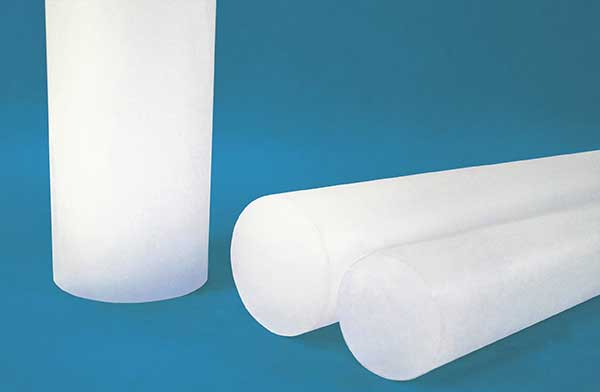
Does Drake Offer PCTFE Machined Parts?
Drake has a versatile array of precision machining centers staffed by an experienced production and quality management engineers. The team specializes in complex precision components machined from the company’s portfolio of advanced polymers for cryogenic applications including PCTFE, Torlon® PAI, Vespel® PI, PEEK and Drake’s CryoDyn® cryogenic grade PEEK, all supplied to Drake customers worldwide.
Drake PCTFE Certifications and Traceability
Drake Plastics provides no-charge certifications and lot traceability on each shipment of all shapes and machined parts. Drake PCTFE material is provided with Certifications to ASTM D1430-22 Group 01 Class 1 Grade 3, and AMS 3650.
Drake also provides test reports related to the following specialized standards for a testing fee:
- Autogenous Ignition test with Gaseous Oxygen according to NF EN ISO 11114-3 standard
- Mechanical Impact test in Liquid Oxygen according to EN 1797 standard
- Cryogenic Vessels – Gas/Material Compatibility according to DIN EN 1797 and ISO 21010 standards
Contact Drake Plastics for details.

